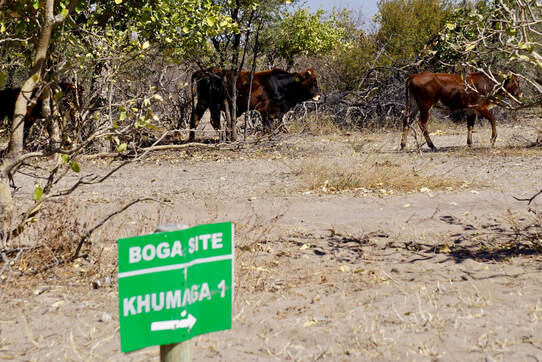Human-Wildlife Interactions
Humans and wildlife come into contact everyday. These interactions come in many forms, from bears sifting through residential garbage bins to tiger predation on livestock. These interactions have the potential to impact the lives of both humans and wildlife. Particularly outside of protected areas and in landscapes that continue to be anthropogenically changed, land management decisions impact human livelihood, local cultures, and wildlife conservation alike. As such, the goal of human-wildlife research in the lab is to develop insights and principles about the interplay between humans and wildlife -- when and where they come into conflict -- in order to develop practical guidance about ways that humans and wildlife species can coexist fairly harmoniously on landscapes.
Lion population connectivity and co-existence with humans
Researcher: Mary

Mary's research examines human-carnivore conflict in the Ewaso Ecosystem of north-central Kenya. Recent shifts in livelihood practices, as well as smaller subdivisions and changes in land use, have contributed to the habitat degradation and fragmentation for wildlife in the region. For lions, whose home ranges cover large expanses, habitat degradation can simultaneously reduce their ability to avoid humans while also reducing their wild prey base. Lion predation on livestock remains an issue and, while conservation organizations are working to minimize lion-livestock encounters, the concern for lion connectivity remains. Mary is using a landscape genetics approach to study lion connectivity and genetic diversity, two key factors to species longevity. She is looking at how environmental features (temperature, rainfall, habitat type and quality) as well as human impacts on the landscape (infrastructure, livestock grazing patterns, tolerance to lions, etc.) influence lion movement and gene flow. Mary is developing coexistence landscape maps, an integrative approach that utilizes multidisciplinary data collection. The objective is to offer insight for landscape management strategies that seek to minimize human-lion conflict and maximize land use benefits to both humans and wildlife.
Socio-ecological landscape between the Makgadikgadi National Park and Kalahari Game Reserve
Researcher: Kaggie

There is a need for new ways to conserve wildlife species across human-dominated landscapes. Isolation of wild spaces and protected areas continues, thereby reducing species movement, spatially constraining them from fulfilling their life-history requirements. Conservation planning addresses this issue by accounting for wildlife habitat suitability and connectivity within the intervening landscape matrix. What is often unaccounted for, however, is consideration of human habitants and their livelihoods. Failing to do this could undermine conservation. Kaggie’s study aims to develop conservation action that fosters landscape coexistence between humans and wildlife in the Makgadikgadi area of Botswana. Economic programs are being developed within the landscape to stem high unemployment. Conservation and economic development needs to be planned carefully or the region could face increased human-wildlife conflict. The project will design an inclusive, socio-ecological systems plan that can provide nuanced understanding of how to achieve human-wildlife coexistence that draws upon participation from local communities.
